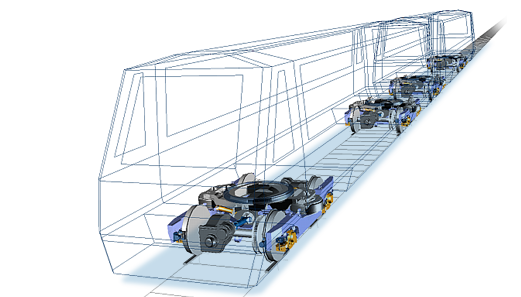August 15, 2014
If your end game is to provide tools that provide a soup-to-nuts virtual design experience, you’ve got to provide capabilities that allow for accurate and real-time simulation of an entire system, including electrical and mechanical controls.
That’s exactly what Dassault Systemes is bringing to the table with its latest acquisition of SIMPACK, based in Munich, Germany. SIMPACK, with 130 customers in the energy, automotive, and rail industries, including such marquee names as BMW, Jaguar Land Rover and Bombardier, has been a long-time partner of Dassault’s, which has similar arrangements with competing multi-body simulation offerings.
With the current emphasis on smarter, safer products, there was interest in a higher level of integration between SIMPACK and the rest of the Dassault 3DEXPERIENCE platform and SIMULIA simulation portfolio, according to Steven Levine, senior director of portfolio management for SIMULIA, the simulation software brand at Dassault.
“SIMPACK has done of better job of integrating the vehicle [for simulation],” notes Levine. “They allow designers to go from a logical description to a physical description seamlessly, which is critical when designing a system with a lot of intelligence.” Specifically, Levine says SIMPAK lets engineering teams create the real-time system controls using a higher performing dynamic multibody representation while competing products do so in a more computationally-intensive way.
Another advantage of the SIMPACK product compared to competitors is its high fidelity model representations, Levine says. “They bring a higher level of realism into the model that you couldn’t do with other products,” he says. For example, some of the competing products would represent a tire on a car as not a full tire, but rather a response curve representation of what a tire would do, he says. “That’s good enough for basic design, but as you move forward, you want to put a real-life tire in,” he explains — a level of realism in keeping with Dassault’s strategy for its 3DEXPERIENCE platform.
Weaving multibody simulation capabilities directly into the 3DEXPERIENCE platform is also in keeping with customers’ desire to do more robust simulation early on in the design cycle as opposed to at the end for verification, Levine says. “Designing an automobile has evolved a lot in the last couple of decades and simulation is used much more as an upfront tool,” he explains. “Companies are now designing cars from an ergonomic perspective and engineering perspective in parallel to cut down design cycles and make it a more holistic experience. This is a tool that can really help.”
Watch this video to see how SIMPACK was used to simulate the landing of an A320 aircraft.
Subscribe to our FREE magazine, FREE email newsletters or both!
About the Author
Beth Stackpole is a contributing editor to Digital Engineering. Send e-mail about this article to [email protected].
Follow DE






